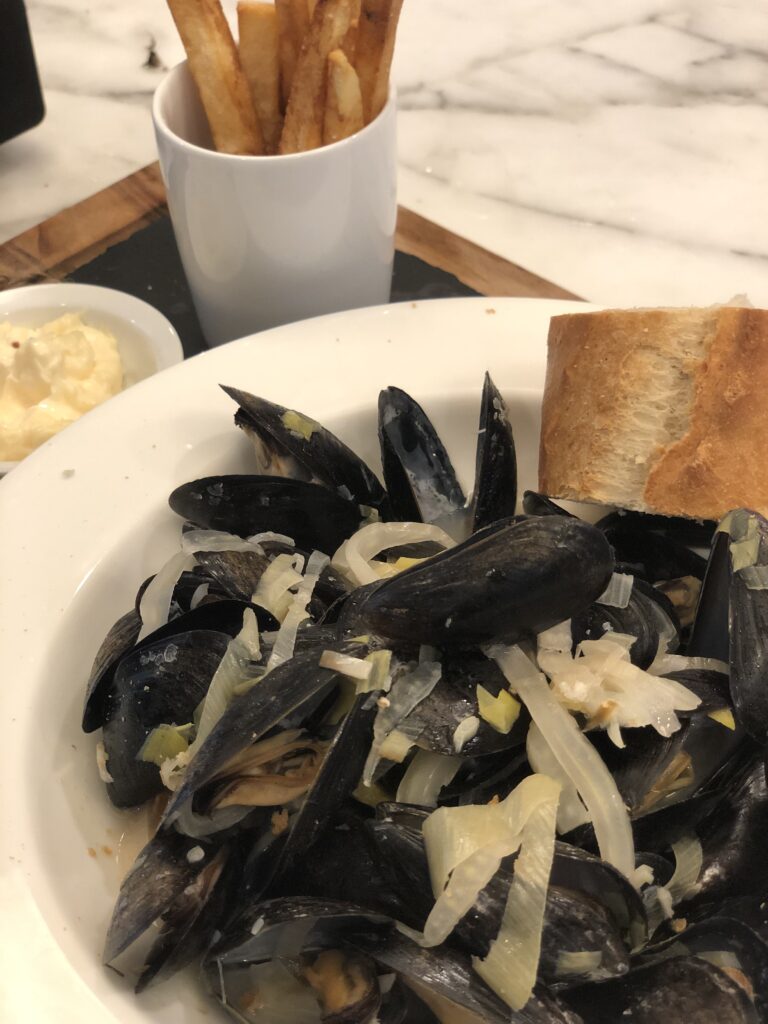There are things that live in our collective reality that we just accept until one day we realize we don’t know why it has to be the way it is and realize, there is, in fact, no reason. It’s just always been done that way. While this is true of enough things to fill several folumes today I’m focusing on the use of lettuce as a soggy plate under food that is meant to be somehow elevated but is not.
Somewhere along the line someone decided that serving foods on a small bed of lettuce elevated them to a fancier level and we all decided to go along with it. And go along we have, for three quarters of a century. Well, I woke up on this fine Saturday morning and decided that it’s time to freshen our approach.
For the entirety of my lifetime it’s been a fact that a “diet platter,” or any scoop of cottage cheese, tuna salad or chicken salad (we can address the “scoop” aspect of this in another post) served in any diner across America will be served on a bed of lettuce. Why? A quick look into the history of it tells me that iceberg lettuce became widely used in America in the 1950s. Right around the time when modern conveniences were taking food in directions heretofore unknown and middle class women were becoming hostesses extraordinaire looking to impress their neighbors and husbands’ bosses (yes I generalize but so did the 50s). What better way to do this than presenting their culinary delights on a bed of lettuce – American’s first fresh vegetable to be widely available and distributed year round.(1) This was also the era of the rise in America’s diners and the two styles just grew hand in hand.
70 plus years later, lettuce is no longer a novelty or a status symbol. We’ve evolved from a market that only included iceburg lettuce to a wide variety available easy available to all. The practice of the lettuce presentation has all but ceased in private homes, but archaic practice continues in the restaurant world and has, frankly, outlived it’s day. A recent dinner at a nice-ish Italian restaurant near me cemented this idea in my head. An order of escargot was served poured onto a plate of wilted mixed lettuce leaves (in this case iceburg might have held up better). The sauce soaked into the leaves and the effect was a chewy plate of snails instead of a buttery garlicky delight that would have been better off served on any plate with a nice crispy baguette. Similarly a French restaurant in my town serves its paté on a bed of lettuce with a few crusts of bread.
Here is my plea: PLEASE stop doing this.
It is unappetizing. No one enjoys scraping liver pate off a leaf or looking at the residue of cottage cheese on a crispy bite of iceburg left wondering if the lettuce is part of the meal or not
All of these dishes would be better served directly on a plate with a garnish, or an actual salad, on the side (which reminds me if you’re serving your delicate mixed green salad next to something hot, make sure they’re not touching. Hot lettuce, with rare exception, is not good.)
Here’s where it’s ok to use lettuce:
1. Salads of any kind. If you’re serving a hot piece of salmon or chicken on TOP of the salad, make sure your lettuce can stand up to it.
2. Lettuce wraps. Again use a sturdy lettuce that ads some crunch. I also like wraps collard greens which add a little sweetness.
3. Lettuce cups. The caterer at a party I threw recently served the MOST delicious curried chickpea salad in a tiny spear of romaine. It was to die for.
A little thought goes a long way in this area. Think of the presentation before and after your guest starts eating – what will they be left with on their plate? Remember most lettuce does not do well with heat or hot sauces. As a general plea to restaurants everywhere – let’s rethink the use of lettuce – elevate it to a main ingredient and free it from it’s job as a soggy plate for the good of all!
Sources:
Treehugger – A brief history of lettuce. https://www.treehugger.com/brief-history-lettuce-americas-first-fresh-vegetable-4856661


